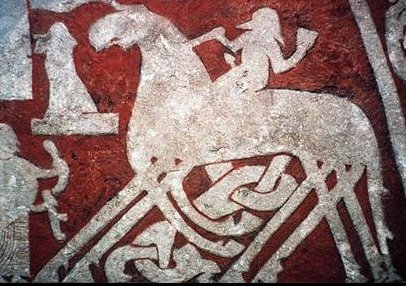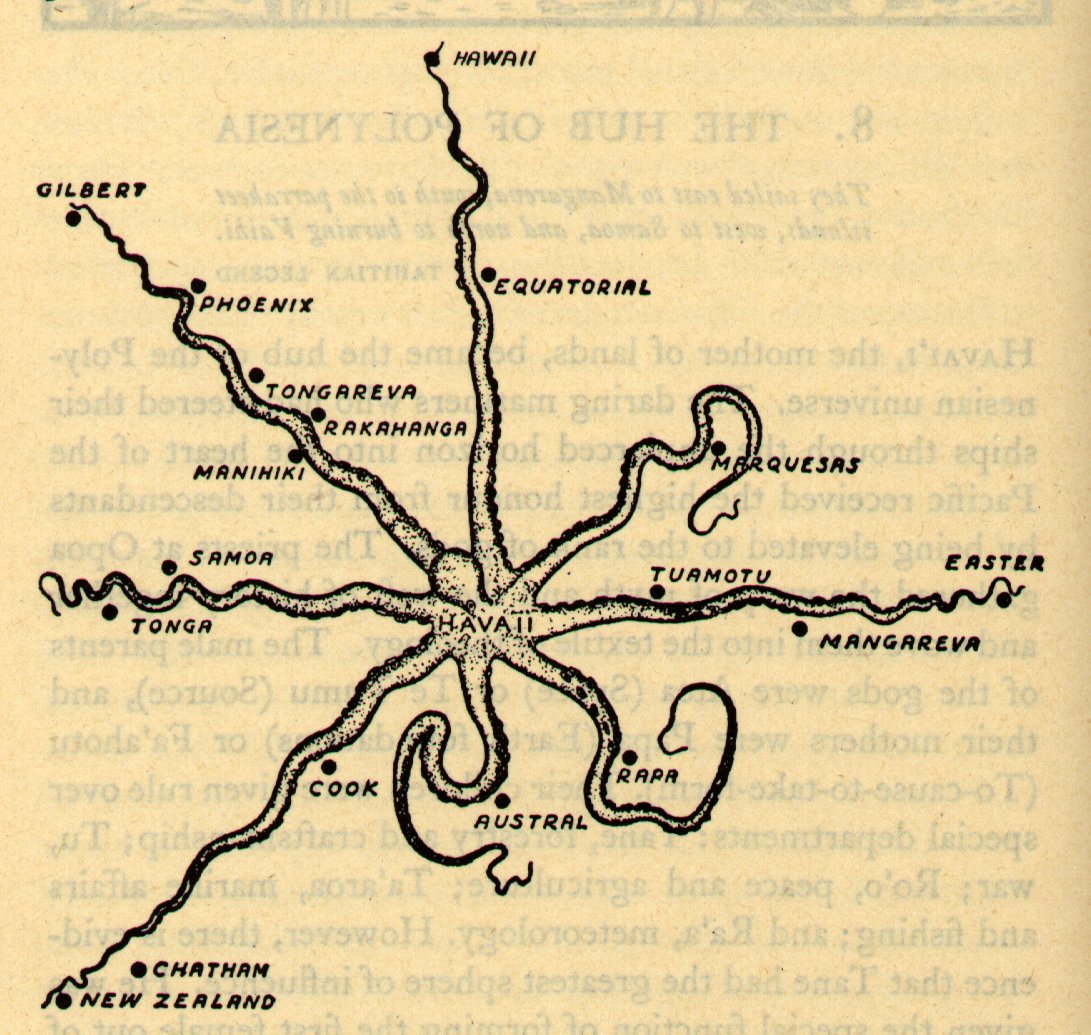The horse of Odin was Sleipner and he
had 8 legs:
An octopus has also 8 legs:
And Metoro said te heke (the
octopus) at Ca2-1, possibly pointing out the 'hub' at
top center:
|
April 9 (464) |
10 |
11 (101) |
 |
 |
 |
|
Ca1-19 |
Ca1-20 |
Ca1-21 |
|
te maitaki - te kihikihi |
hakaraoa - te henua |
tagata huki |
|
no star listed |
Ksora (20.1) |
γ Phoenicis (20.8), δ Phoenicis (21.5) |
|
October 9 |
10 (283) |
11 |
|
Mizar (202.4) |
Al Simāk-12 /
Chitra-14 /
Horn-1 |
71 Virginis
(203.6) |
Sadalmelik (647) |
SPICA,
Alcor (202.7) |
|
April 12 |
13 (468) |
14 |
 |
 |
 |
|
Ca1-22 |
Ca1-23 |
Ca1-24 |
|
manu rere |
- |
- |
|
no star listed |
Achernar (23.3) |
no star listed |
|
October 12 (285) |
13 |
14 |
|
Heze (205.0) |
ε Centauri
(206.3) |
no star listed |
|
April 15 |
16 (471) |
 |
 |
|
Ca1-25 |
Ca1-26 |
|
kiore ki te huaga |
kua
moe ki te tai. |
|
no stars listed |
|
October 15 (288) |
16 |
|
τ Bootis
(208.2), Benetnash (208.5) |
ν Centauri
(208.7), μ Centauri, υ Bootis (208.8) |
|
April 17 |
18 |
19 |
20 |
21 (111) |
22 |
 |
 |
 |
 |
 |
 |
|
Ca2-1 |
Ca2-2 |
Ca2-3 |
Ca2-4 (30) |
Ca2-5 |
Ca2-6 |
|
Te heke |
erua tagata |
te henua |
tagata oho ki tona huaga |
kua oho |
|
Al Sharatain-1 /
Ashvini-1
/
Bond-16 |
ι Arietis (28.0), λ Arietis (28.2) |
Alrisha, χ Phoenicis (29.2) |
2h (30.4) |
no star listed |
η Arietis (31.9) |
|
Polaris, Baten Kaitos (26.6), Metallah
(26.9), Segin, Mesarthim, ψ Phoenicis
(27.2),
SHERATAN,
φ Phoenicis (27.4) |
Alamak (29.7), κ Arietis (30.3), Hamal
(30.5) |
|
October 17 |
18 |
19 |
20 (293) |
21 |
22 |
|
Muphrid
(210.1), ζ Centauri (210.3) |
φ Centauri
(211.0), υ¹ Centauri (211.1) |
υ² Centauri
(211.8), τ Virginis (211.9), Agena (212.1),
θ Apodis (212.5) |
14h (213.1) |
no star
listed |
Svāti-15 /
Neck-2 |
|
Thuban (212.8),
χ Centauri (213.0), Menkent (213.1) |
Asellus Tertius,
Κ VIRGINIS, 14
Bootis (214.8), 15 Bootis (215.2),
ARCTURUS
(215.4), Asellus Secundus (215.5) |
In line with my focus on the lunar
stations of the Arabs, the Hindu, and the Chinese, I
have decided to redmark (with capital letters) only
such stars which in my judgment were 'leading'
stars. For instance have I chosen only Sheratan
instead of also Mesarthim.
Furthermore, and more important, I
have deduced that probably the stars which are close
to the Moon in the night must (in the C text) be
diametrically opposite to those rising with the Sun
in the same day. For instance should stars at 14h (=
2h + 12h) and close to the Full Moon in the night
(e.g. Menkent) be at raaraa in Ca2-4 together
with such heliacal stars as Hamal.
The beginning of the text on side a
can therefore be described as follows:
| Equinox |
|
Side a |
| March 21 |
22 (81) |
23 |
24 |
389 |
| no glyph |
 |
 |
 |
| Ca1-1 |
Ca1-2 |
Ca1-3 |
| koia |
ki te hoea |
ki te henua |
| Al Fargh al Thāni-25 |
ε Phoenicis (0.8) |
Uttara Bhādrapadā-27 / Wall-14 |
θ Andromedae (2.7), ζ Tucanae (3.5) |
| 0h (365.25) |
ALGENIB PEGASI (1.8), χ Pegasi (2.1) |
| Caph, SIRRAH (0.5) |
| September 20 |
21 (264) |
equinox |
23 |
| 12h (182.6) |
Minkar (183.7), ρ Centauri (183.9) |
Hasta-13 / Chariot-28 |
Zaniah (185.8), Chang Sha (186.3) |
| Alchita, Ma Wei (183.1) |
Pálida (184.6), Megrez (184.9), GIENAH (185.1), ε Muscae (185.2) |
The symmetry at Ca1-2 between the heliacal and nakshatra stations in the Hindu and Chinese structures is an argument for my conclusion:
|
Heliacal March 23 |
Nakshatra March 23 |
| Uttara Bhādrapadā-27
|
Hasta-13 |
| Wall-14 |
Chariot-28 |
However, an Octopus has only
8 legs, not 24, and maybe the 'right
ascension time lines' in Polynesia had 46
nights for each such 'leg' (slightly more
than 3h for each leg).
Another argument is how much
easier it was to get rid of the 'double book
keeping' with counting twice instead of only
once from some earlier point in the text.
The basic features of a structure should be
simple.
|














